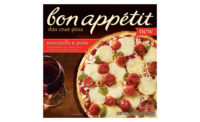Research uncovers consumer values influencing food decisions

Taste, price and convenience are no longer the sole deciding factors when shoppers buy food and beverages, according to a new study from Deloitte, New York; Food Marketing Institute (FMI), Arlington, Va.; and Grocery Manufacturers Association (GMA), Washington, D.C.
The study, “Capitalizing on the Shifting Consumer Food Value Equation,” found that roughlyhalf of Americans surveyed (51%) weigh “evolving drivers”—health and wellness, safety, social impact, experience and transparency–in their purchasing decisions, in addition to the “traditional drivers” of taste, price and convenience. Moreover, this occursregardless of demographicfactors.
“Contrary to conventional wisdom, it’s not just the millennials or most affluent putting these evolving drivers in the mix,” saysJack Ringquist, principal, Deloitte Consulting LLP and global consumer products leader. “Our research reveals that the preference for these attributes does not differ by generation, income level or region, but is pervasive across these groups. The U.S. consumer has changed in a fundamental and impactful way, and people’s preferences are becoming even more fragmented than the food industry may have anticipated.”
The study also showed a shift in the way people think about food safety. Americans no longer define the concept of food safety based on near-term risks to their health, according to the study. Instead, nearly three-quarters (74%) of consumers surveyedbelieve that a definition of food safety limited to “one that will not cause any immediate, physical, harm” is insufficient. Consumers now link health, wellness and transparency with their definition of safety, and include factors such as free from harmful ingredients (62%);clear and accurate labeling (51%);and fewer ingredients, processing and nothing artificial (42%).
“Food retailers are inherently ‘shopper advocates’ and they respect that their customers want both genuine and transparent shopping experiences,” says FMI chief collaboration officer Mark Baum. “Our study sheds light on how companies can better understand the intersection of these new consumer food values and their own growth strategies.”
The study also addresses several implications of the shifting value equation for the food and beverage industry, one where some brands will “double down” on their strengths and focus more specifically on the more traditional needs, while others invest more and explore evolving needs. Industry implications of the report’s findings include:
- Consumer tastes and preferences will continue to fragment;
- Retailers’ role influencing consumer purchase decisions will continue to increase;
- Smaller, newer companies will leverage new technologies, third-party relationships and improve engagement to earn consumer trust;
- Larger competitors within the industry will adjust to fulfill new, unique value propositions; and
- Market success will be determined by building purpose-driven competitive advantages.
“Today’s consumers have a higher thirst for knowledge than previous generations, and they are putting the assessment of that information into their value equation,” says Jim Flannery, senior executive vice president, operations and industry collaboration at GMA. “There is no doubt that the consumer value equation has changed, as taste, price and convenience are now only the foundation with the need to leverage the emerging value drivers. Brands that win with consumers will likely be those that provide the information they seek, well beyond what is on the label.”
The year-long study consisted of surveying 5,000 consumers nationwide and interviews with executives from over 40 companies across retailers, food and beverage manufacturers, ingredient suppliers and agricultural producers.
Looking for a reprint of this article?
From high-res PDFs to custom plaques, order your copy today!






